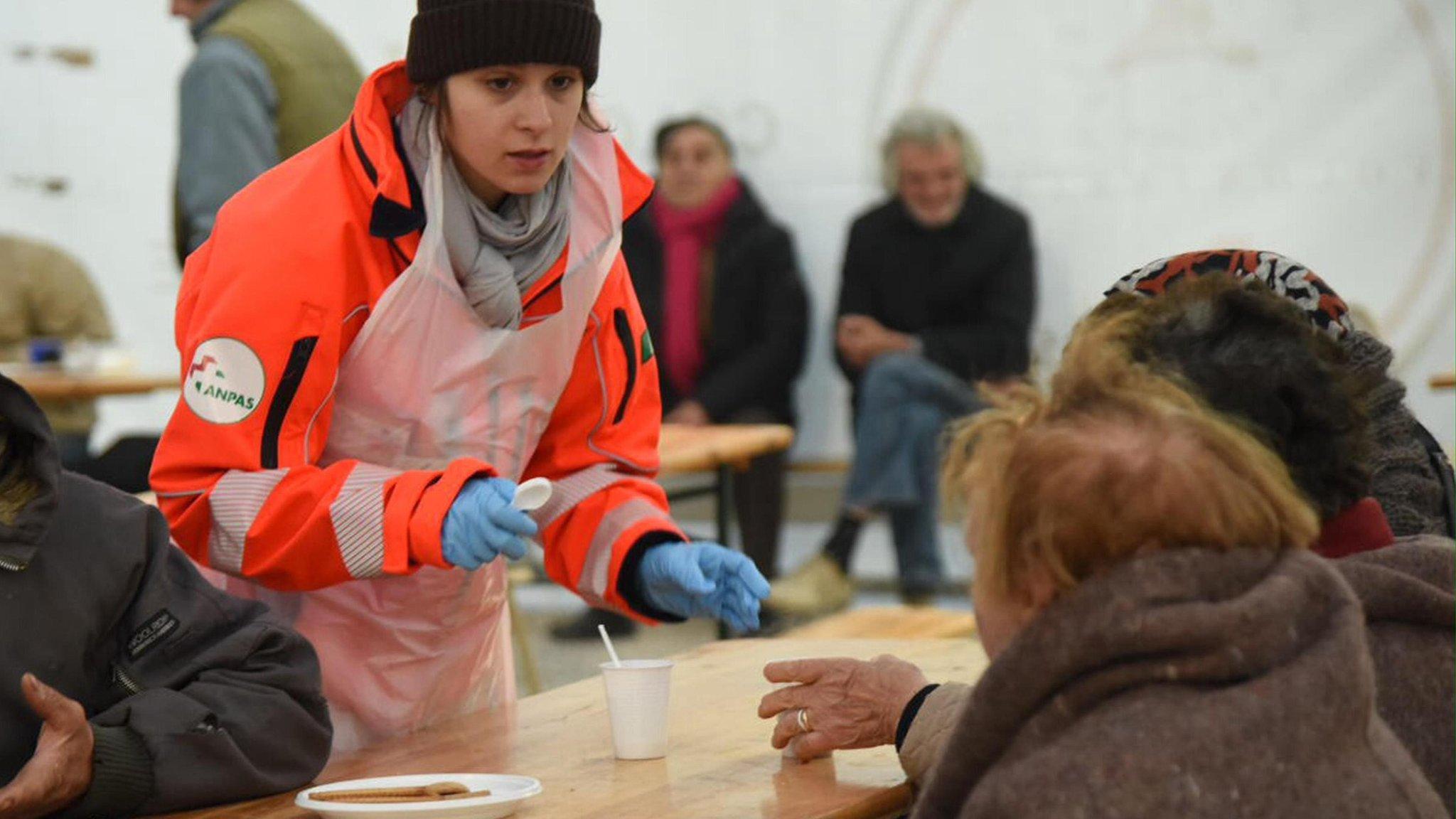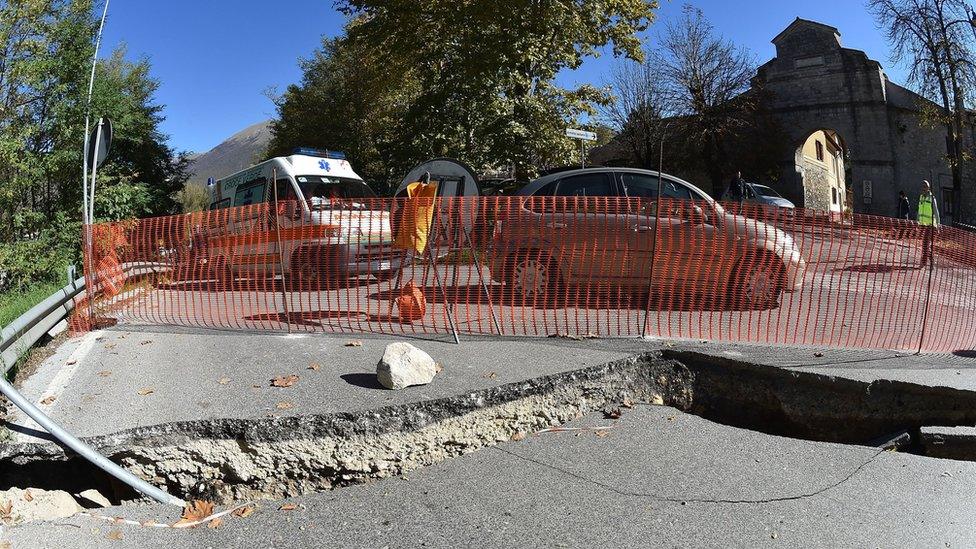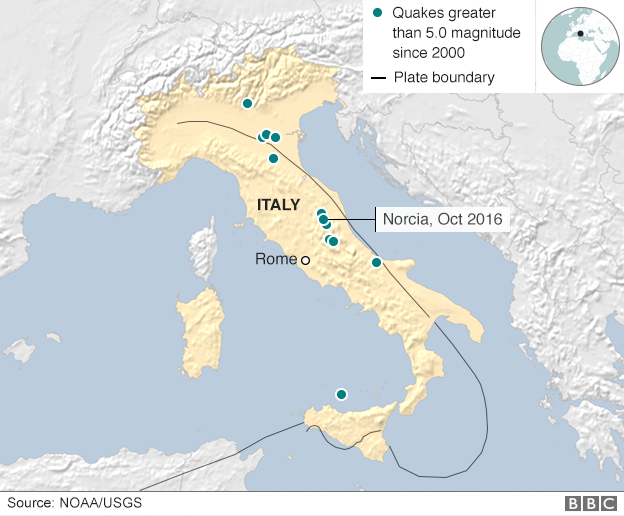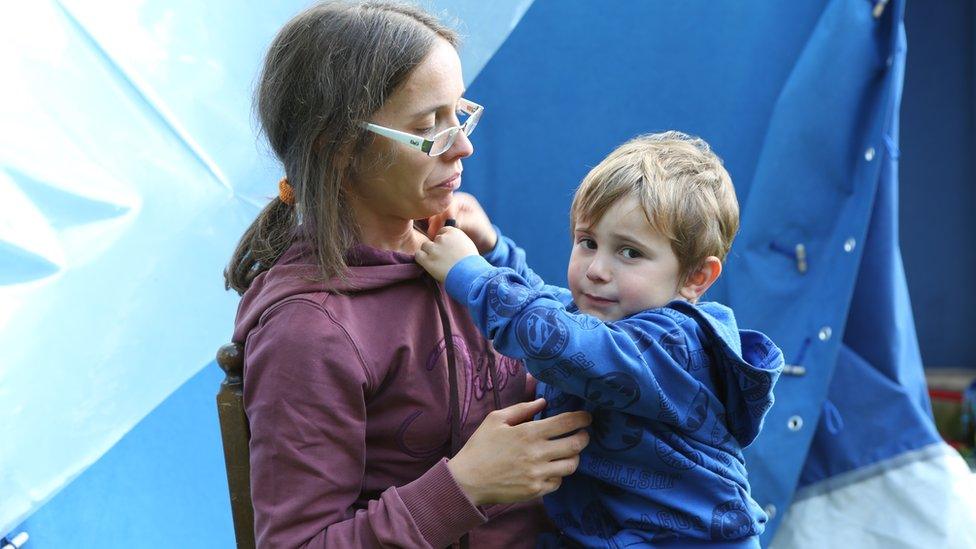Italy quake: At least 15,000 in temporary shelters
- Published
Drone footage shows the extent of the damage to the basilica of San Benedetto in Norcia
Italy's most powerful earthquake since 1980 has left more than 15,000 people homeless, according to the country's civil protection agency.
No-one was killed in Sunday's quake but 20 people were injured and there is extensive damage in and around Norcia.
The 6.6-magnitude quake struck near the central region where nearly 300 people were killed by a quake in August.
Prime Minister Matteo Renzi is due to chair a meeting of his cabinet to discuss emergency reconstruction.
Mr Renzi said that Italy's soul was unsettled.
It was an "enormous relief" that no-one had died this time, he added.
The earthquake struck on Sunday morning, destroying buildings or rendering them structurally unsafe in several towns and villages in the mountainous central region.
Why multiple earthquakes are hitting Italy
Residents' tough choice: To stay or to go
Many of those affected are living with relatives or friends, but the civil protection agency said it was providing assistance to 15,000, with 10,000 accommodated in tents and converted sports halls. Thousands spent the night in their cars or under canvas.

Many people are being sheltered in a sports hall in Norcia

This road in Norcia shows severe earthquake damage

One building in Castelluccio di Norcia was completely destroyed
Hotels on the Adriatic coast are sheltering some 4,000.
More than 100 aftershocks were registered overnight into Monday, including one of magnitude 4.2.
Tremors from the latest earthquake were felt in the capital Rome, more than 100km (60 miles) away from the epicentre near the historic town of Norcia.
Norcia resident Giuseppe Tuccini
The Rome metro system was closed on Sunday; an early 20th Century bridge, Ponte Mazzini, has been shut to traffic after cracks appeared; and a crack was visible on the facade of St Paul's Basilica, one of the four principal papal churches.
In Norcia, in the Umbria region, locals have been demanding tents rather than moving out of the town. Some decided to stay in their homes.
Norcia resident Stefano Boldrini, who is now living in a van with his eight-year-old daughter, was asked if they planned to stay in the area.
"How could we? There's no more school, or church, or police station. There's nothing here any more," he said.
The medieval basilica of St Benedict in Norcia was among many historic buildings destroyed.

A crack in St Paul's Basilica, Rome

Buildings have been destroyed, including this church in the village of Campi
Helicopter video shows cracks in mountainside
An evacuation of vulnerable buildings in central Italy last week, following strong aftershocks from August's quake, may have saved lives.
Officials said three people were dug out of the rubble alive in the town of Tolentino on Sunday.
Cisse Dame's family is among 200 people sheltering in a gym in Tolentino
Sunday's quake - 6.6 as measured by the US Geological Survey - came on top of August's quake and two last week of magnitude 5.5 and 6.1.
Other towns and villages to have suffered damage include Castelsantangelo, Preci, Ussita and Arquata.
Central Italy has seen several major quakes in recent years. Earthquakes which devastated the town of L'Aquila in 2009 and Amatrice in August this year killed about 300 people each.
But they both measured 6.2 and were deeper than Sunday's earthquake.


Italy's most violent earthquakes since 1900
October 2016 - Norcia, central Italy, magnitude 6.6, no deaths reported so far
November 1980 - Campania, southern Italy (Naples badly hit), magnitude 6.9, up to 5,000 killed
July 1930 - Irpinia, Campania, magnitude 6.6, 1,400 killed
January 1915 - L'Aquila, magnitude 6.7, more than 30,000 killed
December 1908 - Strait of Messina, magnitude 7.1, up to 200,000 killed by earthquake and tsunami
September 1905 - Calabria, magnitude 7.2, up to 2,500 killed by tsunami


Are you in the area? Have you been affected by the earthquake? Email haveyoursay@bbc.co.uk, external with your stories and pictures.
Please include a contact number if you are willing to speak to a BBC journalist. You can also contact us in the following ways:
·WhatsApp: +44 7525 900971
·Tweet: @BBC_HaveYourSay, external
·Upload your pictures here, external
·Send an SMS or MMS to +44 7624 800 100
- Published24 August 2016
- Published5 October 2016

- Published2 October 2016

- Published29 September 2016
